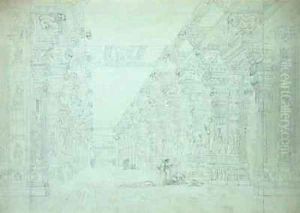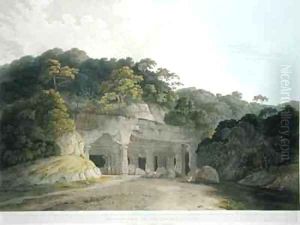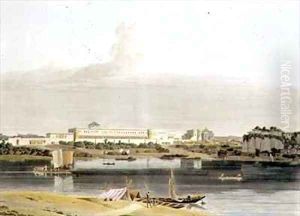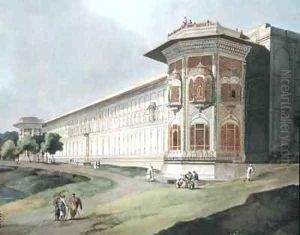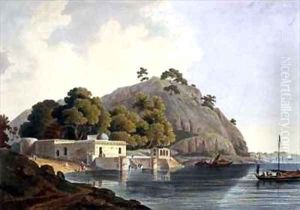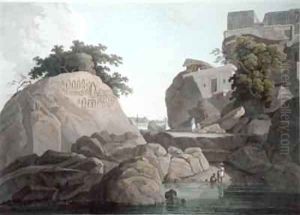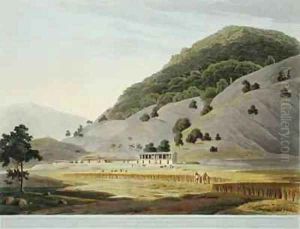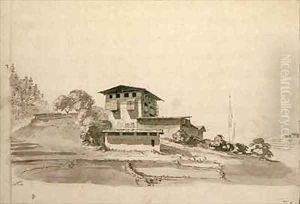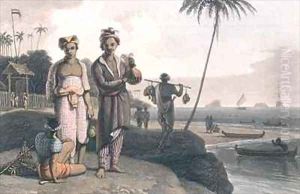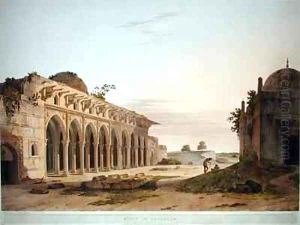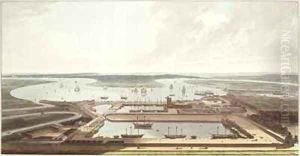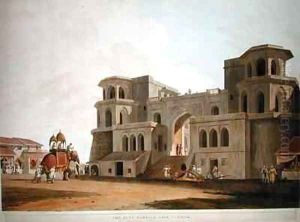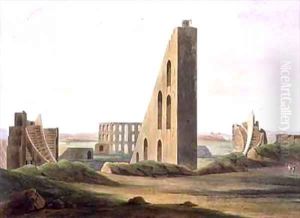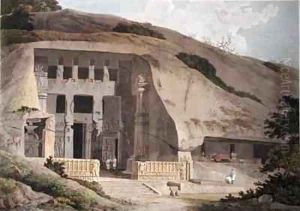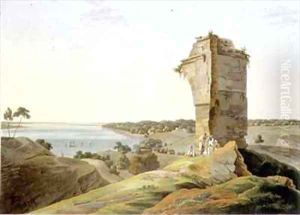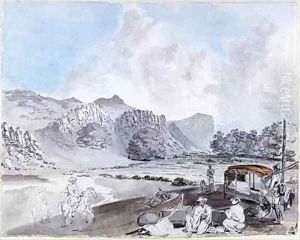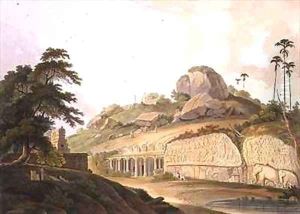Thomas & William Daniell Paintings
Thomas Daniell and his nephew William Daniell were English artists who are best known for their series of aquatint engravings, 'Oriental Scenery,' which depicted the landscapes and antiquities of India. Thomas Daniell was born on April 14, 1749, in Kingston upon Thames, and William Daniell was born on March 16, 1769, in Chertsey, Surrey. Thomas initially trained as a painter and later specialized in landscape painting.
In 1784, Thomas Daniell received permission from the East India Company to travel to India to paint landscapes and scenes of Indian life, an unusual undertaking at the time. His nephew, William, then only 14 years old, accompanied him as his assistant. Over the next several years, they traveled extensively throughout the Indian subcontinent, documenting the rich cultural heritage and lush landscapes they encountered.
Their journey in India lasted from 1786 to 1794, during which time they produced a large number of sketches and paintings. On returning to England, they used these works as the basis for a series of aquatints that would bring them fame. 'Oriental Scenery,' published in six volumes between 1795 and 1808, contains 144 plates and is considered one of the most important collections of images of India made during the time when the British presence in the country was intensifying.
The Daniells' work was crucial in shaping the European view of India. Their images were widely circulated and influenced not only art but also the public's perception of the East. They also published other works, including 'A Picturesque Voyage to India by the Way of China' (1810) and 'Twenty-four Views of Hindoostan' (1806).
After their successful venture, Thomas continued to work as a painter and became a member of the Royal Academy in 1799. William also continued to paint, exhibiting at the Royal Academy and other venues. Thomas Daniell died on March 19, 1840, while William Daniell passed away earlier on August 16, 1837. Their legacy lives on through their detailed and evocative portrayal of India, which remains an important resource for understanding the historical and cultural landscape of the region during the late 18th and early 19th centuries.

